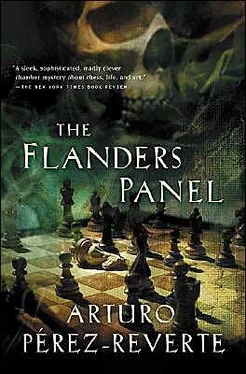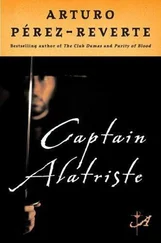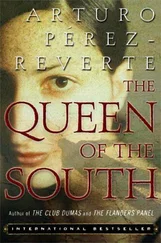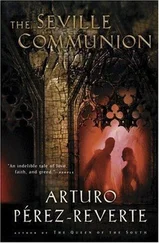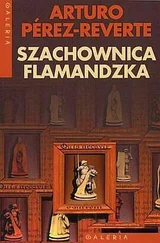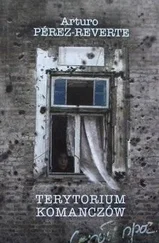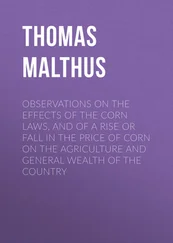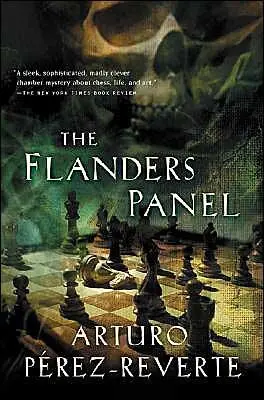
Arturo Perez-Reverte
The Flanders Panel
I The Secrets of Meister Van Huys
God moves the player, he in turn the piece.
But what god beyond God begins the round
Of dust and time and sleep and agonies?
Jorge Luis Barges
A sealed envelope is an enigma containing further enigmas. This particular one was of the large, bulky manila variety with the name of the laboratory stamped in the lower left-hand corner. And, as she weighed it in her hand whilst scrabbling for a paper knife amongst the many brushes and bottles of paint and varnish, Julia could never have imagined the extent to which the gesture of slitting it open would change her life.
In fact, she already knew what the envelope contained. Or, as she discovered later, she thought she did. Perhaps that’s why she felt no special sense of anticipation until she’d removed the prints from the envelope, spread them out on the table and looked at them, almost holding her breath. Only then did she realise that her work on The Game of Chess would be far from routine. Unexpected discoveries, in paintings, on furniture, even on the binding of antiquarian books, were commonplace in her profession. During her six years of restoring works of art, she’d uncovered her fair share of preliminary sketches and pentimenti, of retouching and repainting and even forgeries. But never had she come across an inscription concealed beneath the painted surface of a picture: three words revealed by X-ray photography.
She picked up her crumpled pack of unfiltered cigarettes and lit one, unable to take her eyes off the prints. Given the evidence of the 12 x 16 inch X-ray plates, there was no possible room for doubt. The painting was a fifteenth-century Flemish panel, and the original sketch, done in grasaille, was as clearly visible as the grain of the wood and the glued joints of the three pieces of oak that made up the panel on which, out of lines, brush strokes and layers of underpaint, the artist had gradually created his work. At the bottom of the painting, brought to light after five centuries, thanks to radiography, was the hidden phrase, its Gothic characters standing out in sharp contrast against the black and white of the plate.
QUIS NECAVIT EQUITEM
Julia knew enough Latin to be able to translate it without a dictionary: Quis, interrogative pronoun meaning “who”, necavit, from neco, “to kill”, and equitem, the accusative singular of eques, “knight”. Who killed the knight? Adding a question mark, which, in Latin, the use of quis rendered redundant, lent the phrase an air of mystery.
WHO KILLED THE KNIGHT?
It was disconcerting. She took a long pull at her cigarette, holding it in her right hand whilst with her left she rearranged the X-ray photos on the table. Someone, possibly the painter himself, had planted a kind of puzzle in the picture and had then concealed it with a layer of paint. Or perhaps someone else had done so at a later date. That gave her approximately five hundred years to play with in dating the inscription. The notion pleased Julia. Solving the mystery shouldn’t prove too difficult. After all, that was her job.
She picked up the photos and got to her feet. The grey light from the large window in the sloping ceiling fell directly on to the painting on the easel. The Game of Chess, oil on wood, painted in 1471 by Pieter Van Huys. She stood in front of it and looked at it for a long time. It was a domestic interior painted in minute fifteenth-century detail, the sort of scene with which the great Flemish masters, using oil for the first time, had laid the foundations of modern painting. The main subjects were two gentlemen of noble appearance, in their middle years, sitting on either side of a chessboard on which a game was in progress.
In the background to the right, next to a lancet window framing a landscape, a lady, dressed in black, was reading the book that lay in her lap. Completing the scene were the painstaking details typical of the Flemish school, recorded with a perfection that bordered on the obsessive: the furniture and decorations, the black-and-white tiled floor, the design on the carpet, a tiny crack in the wall, the shadow cast by a minuscule nail in one of the ceiling beams. The painting of the chessboard and chess pieces was executed with the same precision as the faces, hands and clothes of the people depicted, with a realism that contributed to the painting’s extraordinarily fine finish, its colours still brilliant despite the inevitable darkening caused by the gradual oxidation of the original varnish.
Who killed the knight? Julia looked at the photo she was holding and then at the picture, where, to the naked eye, not a trace of the hidden inscription was visible. Even closer examination, using a binocular microscope x7, revealed nothing. She lowered the blind over the large skylight, plunging the room into darkness, and near the easel placed a tripod on which was mounted an ultraviolet lamp. Under its rays all the oldest materials, paints and varnishes would show up as fluorescent, whereas more recent ones would appear dark or black, thus revealing any later repainting and retouching. In this case, however, the ultraviolet light revealed only a uniformly fluorescent surface, including the part concealing the inscription. This indicated that it had been painted over either by the artist himself or very soon after the painting was completed.
She switched off the lamp and raised the blind. The steely light of the autumn morning again spilled onto the easel and the painting; it filled the whole book-cluttered studio, its shelves overflowing with paints and brushes, varnishes and solvents, the floor a jumble of carpentry tools, picture frames and precision instruments, antique sculptures, bronzes and wooden stretchers, pictures that rested, face to the wall, on the valuable but paint-stained Persian carpet. In a corner, on a Louis XV bureau, sat a hi-fi surrounded by piles of records: Don Cherry, Mozart, Miles Davis, Satie, Lester Bowie, Michael Edges, Vivaldi… On one wall a gold-framed Venetian mirror presented Julia with a slightly blurred image of herself: shoulder-length hair, faint shadows (from lack of sleep) under her large, dark and, as yet, unmade-up eyes. Whenever Cesar saw her face framed in gold by that mirror, he used to say that she was as lovely as one of da Vinci’s models, ma pui bella. And although Cesar could be considered more of an expert on young men than on madonnas, Julia knew that what he said was absolutely right. Even she enjoyed looking at herself in that gold-framed mirror, because it always gave her a sense of having suddenly emerged on the other side of a magic door, a door through which she’d leapfrogged time and space, and it returned to her an image of herself that had all the robustness of an Italian Renaissance beauty.
She smiled to think of Cesar. She always smiled when she thought of him and had since she was a child. It was a smile of tenderness, often a smile of complicity. She put the X-ray photos down on the table, stubbed out her cigarette in the heavy bronze ashtray signed by Benlliure and sat down at her typewriter.
The Game of Chess
Oil on wood. Flemish school. Dated 1471.
Artist: Pieter Van Huys (1415-1481).
Base: Three fixed oak panels, joined by glue.
Dimensions: 60 x 87 cm (three identical panels of 20 x 87).
Thickness of panel: 4 cm.
State of preservation of base: No warping. No noticeable damage by woodworm.
State of preservation of the painted surface: Good adhesion and cohesion of the layer structure. No changes in colour. Some craquelure due to ageing, but no blistering or scaling.
Читать дальше
